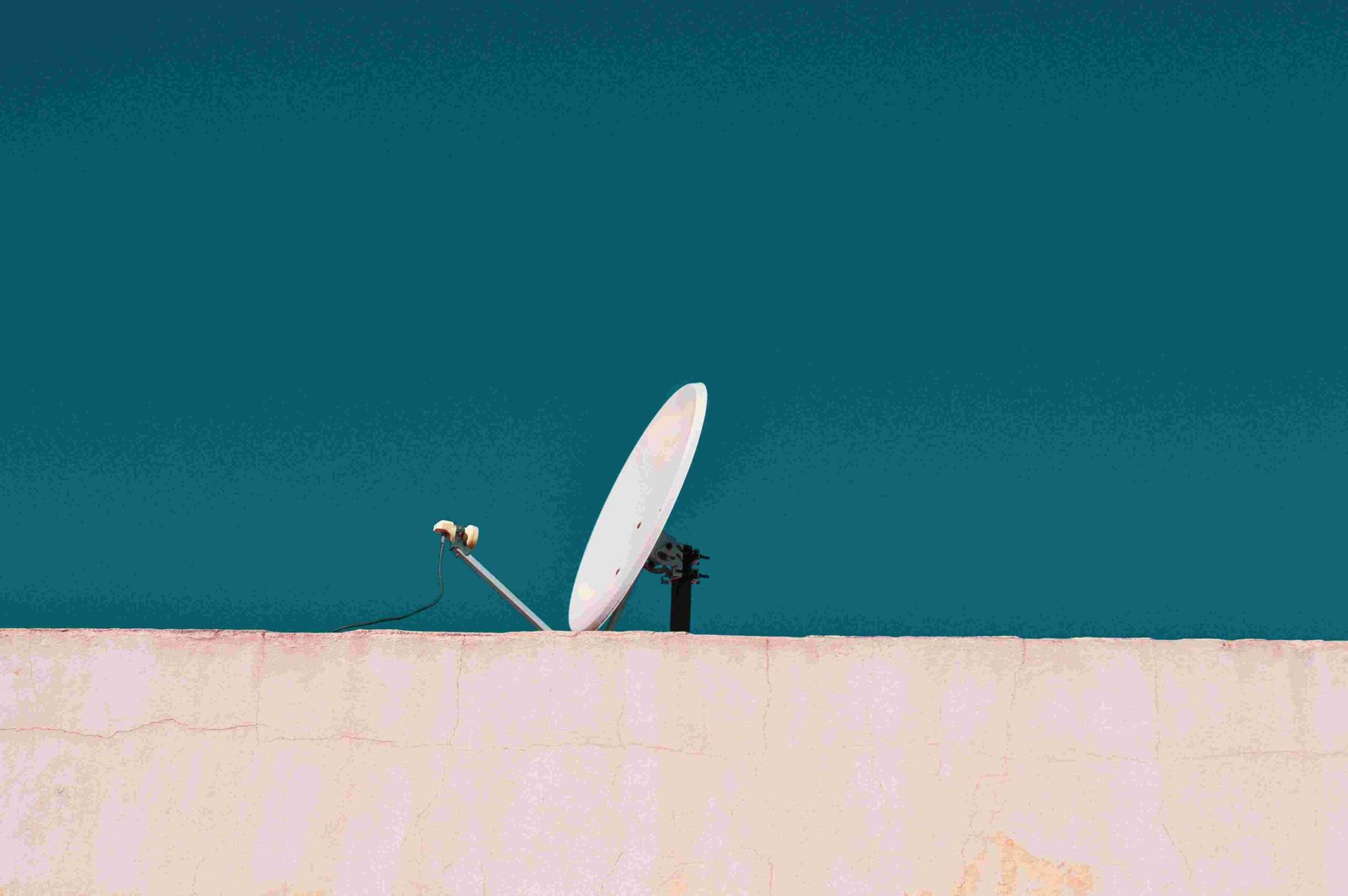What Is Line Of Sight in Communication? With Examples
Learn what line of sight communication is and how it works. Discover examples and understand the key differences with non-line-of-sight methods. Explore more now!

The newest wireless technologies are booming with an innovative form of transfer and communication. Utilizing an incredibly accessible resource - light!
Line of sight (LoS) communication is utilized by Light Fidelity (LiFi) technology, and is a method of transmitting data between two points without any physical obstructions in the signal path. In line of sight communication, the transmitter and receiver must be within a clear, unobstructed line. This unobstructed approach plays a critical role in select wireless communication systems, as it is utilized by a multitude of technologies requiring quick transmission strategies.
From radio to modern-day drone and satellite communications, with applications even beyond line of sight command and control communications, this article will explore how line of sight communication works, various examples, and its alternatives, including non-line of sight communication examples.
How Does Line of Sight Communication Work?
Line of sight communication relies on the idea that electromagnetic waves, such as radio or light waves, travel in a straight path. For this type of communication to work effectively, the transmitter and receiver need to "see" each other without physical obstructions like buildings, mountains, or dense foliage.
There are some key factors to consider in ensuring successful line of sight communication, including:
- Frequency and Wavelength of light transmissions: Higher frequencies, such as those used in visible light and certain microwave transmissions, are more susceptible to obstructions and require direct line of sight.
- Distance and Signal Strength: The effective range for LoS transmissions requires attention to signal power, atmospheric conditions, and terrain. Signal degradation, known as path loss, increases with distance.
- Weather Conditions: Environmental factors, such as fog, rain, and dust, can impact LoS communication by absorbing or scattering signal waves.
In practice, line of sight is a critical requirement for high-frequency communications like microwave and infrared systems. Obstructions in a line of sight communication path can lead to signal interruption.
Examples of Line of Sight Communication Systems
The various communication systems of today can rely on LoS to deliver clear, reliable signals. Some common examples are:
Microwave Links: Widely employed for long-distance communication, especially between communication towers, microwave communication uses high-frequency radio waves. These systems can transmit large amounts of data over vast distances, provided there’s a clear line of sight, but are subject to interruption if the specific bandwidth of transfer is overloaded.
Satellite Communication: Satellite systems also utilize LoS for communication between ground stations and satellites in orbit. In satellite communications, signals are transmitted in outer space, ensuring clear communication beyond line of sight command and control communications.
Infrared Communication: Commonly used in remote controls for televisions and home appliances, infrared systems also depend on line of sight. Any obstruction between the remote and device can limit or completely cut off the signal from the receiver.
Optical Communication: Optical communication, including laser-based systems, uses visible or near-visible light. Fiber optics are a similar concept but are confined within a cable. All strategies require an obstructed line of sight first.
Non Line-of-Sight Communication and Examples
Non-line of sight (NLoS) communication is an alternate form of data transmission that does not require a clear path between the transmitter and receiver. NLoS systems use methods like signal reflection, refraction, or even diffraction to reach the receiver, making them versatile in obstructed environments.
Non Line-of-Sight Communication Examples:
Cellular Networks: Cellular towers use a combination of line of sight and non-line of sight to transmit data, particularly in urban environments. Signals often rely on reflections from buildings and other structures that propel the signal.
Wi-Fi: Wi-Fi signals are carried on frequency waves that can penetrate walls and objects within a building, allowing devices to connect without a direct line to the router. Instead, close range to the router is required for clear signal transfer.
Ultra-Wideband (UWB): UWB uses low-power signals that can pass through walls and other obstructions, making it suitable for applications like indoor tracking systems.
These NLoS systems enable communication in environments like cities, forests, remote or underground spaces where LoS is impractical. However, LiFi as a technology has been found to be an appropriate solution that takes communications beyond remote command and control centers, enabling communication with vehicles that can receive a clear signal in a confined space. We talk about that in the following section.
Beyond Line of Sight in Command and Control Communications
In the realm of command and control, particularly in military or drone applications, Beyond Line of Sight (BLoS) communication outperforms the capabilities of both LoS and NLoS. Satellite and high-frequency radio systems enable BLoS communication systems to interact with operators that control devices, like drones or unmanned vehicles, that are far beyond visual range.
Some key applications of BLoS include:
- Military and Defense: BLoS enables remote operations in challenging terrains, and this secure, long-range control of vehicles and reconnaissance assets can determine mission success.
- Unmanned Aerial Vehicles (UAVs): Commercial and military drones use BLoS to operate far beyond the visual range of controllers, leveraging satellite communication for guidance.
Extending operational range makes BLoS communication systems the most functional system for environments where maintaining a line of sight is impossible. Oledcomm has developed LiFi systems with these considerations in mind, and seek to deliver clear and concise remote communication every time. It’s flagship product for the military, Point 2 Point is a next-gen point-to-point connectivity solution that uses LiFi for secure, reliable communication across mission-critical environments. With Point 2 Point, you can experience RF-free communication with a cable-free setup. Contact us to learn more.
Line of Sight vs. Non-Line of Sight Communication
When comparing LoS and NLoS communication, the primary difference lies in their requirements and performance in obstructed environments.
- Path Requirement: LoS operationally requires a direct unobstructed line of sight, where NLoS can work with signals that reflect or refract around obstacles.
- Frequency Range: LoS exists in high-frequency range like microwave and infrared, where NLoS utilizes lower frequencies for clearer information transfer.
- Signal Quality: LoS experiences interference in high and low ranges, while NLoS has variable interference and may experience signal loss depending on the range.
- Use Cases and Applications: LoS can be found enabling satellite, microwave, and infrared systems, where NLoS interacts with cellular networks and WiFi.
- Environmental Challenges: LoS is affected by weather conditions like fog or storms, whereas NLoS communication systems are more resilient to environmental obstructions
Line of sight communication is a beneficial technology in situations requiring high data rates and low interference, while non line-of-sight communication is essential in cities or environments that exude built-up or obstructed conditions.
Conclusion
Modern communication systems are requiring more and more from their transfer strategies, and line of sight communication is an integral facilitator of high-quality, high-speed data transfer. In scenarios where a direct path exists between the transmitter and receiver, it is the solution. However, in complex environments, non-line of sight communication proves invaluable, allowing data transmission even when obstacles are present.
As LiFi technology advances, the distinction between line of sight communication and non line-of-sight continues to blur, especially with the rise of hybrid, interoperable communication systems that leverage both direct and indirect paths. Each approach has unique advantages, catering to different needs across industries, and can enable command and control in remote regions, as well as provide reliable connectivity in urban centers.
Line-of-sight communication is a strategy of data transfer between a sender and a receiver that requires an unobstructed path, free of physical barriers.
Non line-of-sight communication examples include WiFi, cellular networks, and ultra wide-band (UWB).
Beyond line of sight command and control communications are applications that require a remote control of a communication system. This form of data transfer and communication can be found in military scenarios, as well as drone operations.
Recent articles
Categories
See some more...




